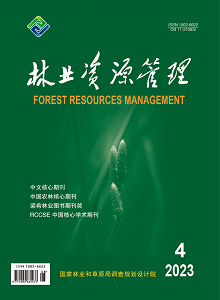Based on remote sensing image of Qinglong County in 2000,2005,2010 and 2015 as the research data,comprehensive index method was used to obtain six grades of rocky desertification,such as no obvious rocky desertification,potential rocky desertification,slight rocky desertification,moderate rocky desertification,intense rocky desertification and extreme intense rocky desertification and the map of rocky desertification classification was extracted.Spatial-temporal dynamic model of rocky desertification was used variation characteristics of rocky desertification in time and space in the past 15 years in the study area analyzed,the principal component analysis method employed and the weight of each driving factor of rocky desertification determined.The result shows that from 2000 to 2015,in time,the extreme intense rocky desertification,intense rocky desertification and moderate rocky desertification area are sharply decreased;no obvious rocky desertification,potential rocky desertification and slight rocky desertification appeared as an increasing trend.No obvious rocky desertification,moderate rocky desertification and intense rocky desertification,rocky desertification dynamic degree change are more evident;comprehensive rocky desertification dynamic degree change is smaller,which showed a decreasing trend.In space,rocky desertification grade increasing region mainly occurred in the Huagong Town and Datian Village,and rocky desertification grade decreasing area is relatively bigger,mainly distributed in Changliu Village,Zhongying Township,Machang Village.From 2000 to 2015,continuous rocky desertification changing is the result of joint action of the natural environment and human activity,of which land type area change and population are most significant to the impact of rocky desertification change.Driving factors of rocky desertification area change mainly include population,forest coverage rate,forestland area,cultivated land area,per capita net income of farmers,grassland area and GDP.It is expected that the research results could provide some reference for rocky desertification region’s ecological management work and land sustainable use.

